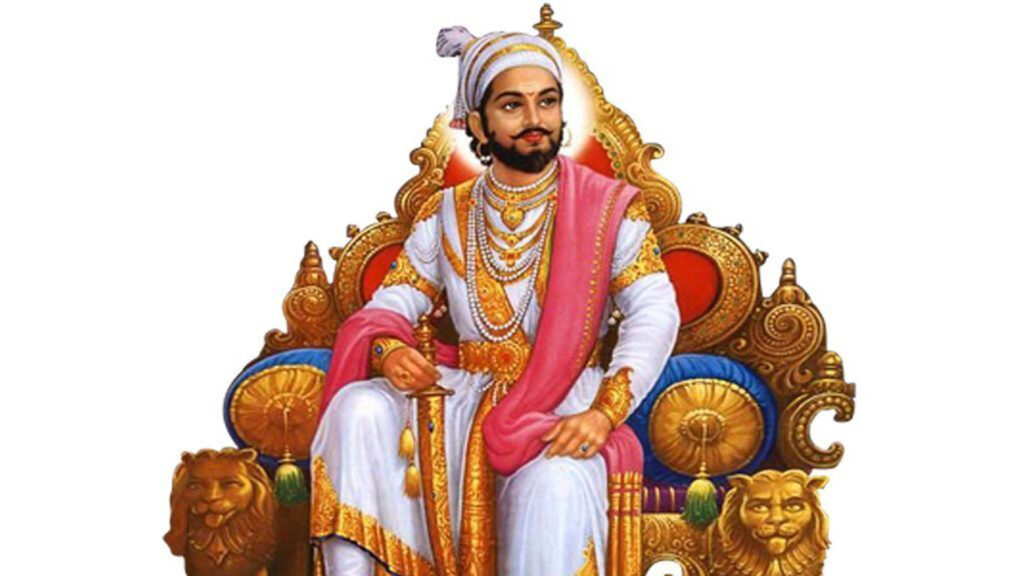Chhatrapati Shivaji Maharaj was one of the greatest warriors and strategists in Indian history, revered for his bravery, intelligence, and foresight. Born on February 19, 1630, in the hill fort of Shivneri, he was the son of Shahaji Bhosale, a prominent general in the Deccan Sultanate, and Jijabai, a deeply religious and visionary mother. From an early age, Shivaji Maharaj was inspired by stories of valor from the Ramayana and Mahabharata, which instilled in him the spirit of leadership and righteousness.
As he grew, he developed a strong sense of nationalism and the dream of establishing a sovereign Hindu kingdom free from foreign domination. Under his leadership, he built the powerful Maratha Empire, challenging the dominance of the Mughal and Adilshahi rulers. His guerrilla warfare tactics, innovative military strategies, and administrative reforms laid the foundation for a strong and independent Maratha rule, which later played a crucial role in resisting foreign invasions in India.

One of Shivaji Maharaj’s greatest contributions was his ability to create a formidable and well-structured military force. He pioneered guerrilla warfare tactics that allowed his comparatively smaller army to defeat much larger and better-equipped forces. His forts, such as Raigad, Pratapgad, and Rajgad, played a crucial role in securing his kingdom and resisting enemy advances. The Battle of Pratapgad in 1659 against Afzal Khan was one of his most famous victories, showcasing his strategic brilliance and bravery. He employed swift movements, night raids, and surprise attacks, which bewildered his enemies and established his dominance in the Deccan.
His naval force, one of the first in Indian history, ensured protection from coastal invasions by the Portuguese and Siddis. Recognizing the importance of self-reliance, he promoted indigenous arms production and implemented policies that enhanced the economic stability of his kingdom. Unlike many contemporary rulers, he was highly ethical in warfare, ensuring the protection of civilians, women, and religious sites during battles, which earned him immense respect and admiration.
Shivaji Maharaj’s Administration
Apart from his military prowess, Chhatrapati Shivaji Maharaj was an exceptional administrator who implemented progressive governance systems. He established a well-organized revenue collection system known as the Chauth and Sardeshmukhi, ensuring financial stability in his empire. His Ashta Pradhan Mandal established in 1674, a council of eight ministers, efficiently managed different aspects of administration, including justice, finance, foreign affairs, and defense. Shivaji Maharaj was also a patron of art, literature, and culture, promoting Marathi language and indigenous traditions.
Unlike many other rulers of his time, he upheld religious tolerance, respecting all faiths and allowing people of different communities to live harmoniously. His coronation in 1674 at Raigad Fort marked the formal establishment of the Hindavi Swarajya, symbolizing self-rule and independence from oppressive regimes. His governance policies not only strengthened the Maratha Empire but also inspired future generations of leaders, including the Peshwas, who carried forward his legacy of self-rule and resistance against foreign domination.
Legacy of Chhatrapati Shivaji Maharaj
The legacy of Chhatrapati Shivaji Maharaj remains deeply rooted in Indian history and culture. He is regarded as the Father of the Indian Navy for his pioneering maritime strategies and as a symbol of resistance against tyranny. His vision of a self-sufficient and prosperous state remains a guiding force for modern governance. In Maharashtra, he is celebrated with immense reverence, with forts, institutions, and events dedicated to his memory. His teachings on leadership, courage, and righteousness continue to inspire people across India and beyond.
Today, his ideals of nationalism, strategic thinking, and good governance are more relevant than ever. His unwavering commitment to justice, fairness, and self-rule set an example of how a ruler should serve his people. The influence of Shivaji Maharaj extends far beyond history books, as his legacy continues to shape the cultural and political landscape of India.
Whether in times of war or peace, his life serves as a testament to the power of visionary leadership, perseverance, and the pursuit of an independent and just society. Some of the significant historical places associated with him include Raigad Fort, Pratapgad Fort, Rajgad Fort, Sinhagad Fort, Torna Fort, Purandar Fort, Lohagad Fort, and Sindhudurg Fort.

[…] Fort was originally known as Rairi. In 1656, Chhatrapati Shivaji Maharaj captured the fort and transformed it into his capital in 1674, when he was coronated as the first […]
[…] Pratapgad Fort is one of Maharashtra’s most iconic forts, known for its historical significance and breathtaking views. Situated in the Satara district, the fort was built by Chhatrapati Shivaji Maharaj in 1656 under the guidance of his Prime Minister, Moropant Trimbak Pingle. The fort played a crucial role in the Maratha Empire’s military strategies, particularly in the famous Battle of Pratapgad in 1659 against Afzal Khan, the general of the Bijapur Sultanate. […]
[…] This majestic fort was the first capital of the Maratha Empire and served as the residence of Chhatrapati Shivaji Maharaj for nearly 26 years. The fort stands at an elevation of approximately 1,400 meters (4,600 feet) […]
[…] Malusare sacrificed his life while recapturing the fort from the Mughals under the command of Chhatrapati Shivaji Maharaj. Even today, visitors can find a memorial dedicated to Tanaji Malusare at the fort, honoring his […]
[…] This fort holds a special place in the history of Maharashtra as it was the first fort captured by Chhatrapati Shivaji Maharaj in 1646, marking the beginning of the Maratha Empire. The name “Prachandgad” means […]